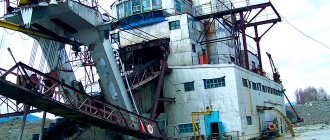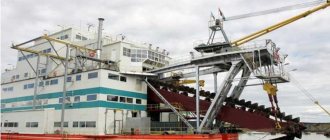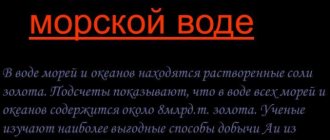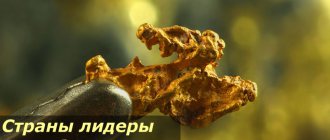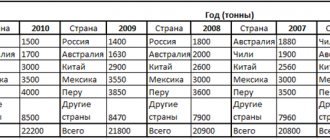Tweet
Trade in Africa is driven primarily by the variety of natural resources that are abundant on the continent. Did you know, for example, that gold and diamonds are among the most exported commodities among African states? And that South Africa is the largest gold producer in the world?
Read the article and learn interesting facts from the world of gold about South Africa, Morocco, Benin and Gambia.
In Africa there are two extremes regarding trade. Most of the countries are developing, while the rest have a skilled workforce, developed infrastructure and financial resources. Despite the differences in the wealth of individual countries, exports to the mainland as a whole are significant. This includes palm oil, oil, cocoa beans, wood, as well as gold and diamonds.
Gold in Africa: from antiquity to the present day
From the 5th to the 8th centuries, due to the demand for coins, gold was the main export commodity. Exports of this precious metal increased between the 7th and 11th centuries, as demand for gold from countries in the Mediterranean region increased. Taking advantage of this cash flow, countries such as Mali and Ghana began minting money: for this reason, Ghana was called the “Land of Gold”. African gold was used in Western gold coins and was a major export product.
Since 1500, African gold has ruled the world's coinage system. Gold was the most important and enduring element that shaped Africa's relationship with the rest of the world. For at least 1,500 years, gold was not only a commodity influencing the economy and history of the continent, but also a link with other countries. Today, not only are the region's gold deposits worth billions, but South Africa is the world's largest gold producer.
Gold deposits of the South African Republic
In terms of mineral reserves, South Africa is one of the richest countries in the world. of diamonds, gold, platinum, copper, lead, uranium, chromium, manganese, nickel, titanium, iron ore, zinc, coal, phosphates on the planet
[!].
South Africa ranks 1st in gold
and 2nd place in
uranium
ore reserves among industrialized capitalist and developing countries.
the Witwatersrand
ore district , where gold-uranium mineralization is concentrated in the mica-quartz cement of metamorphosed conglomerates of the Witwatersrand system. Ore-bearing conglomerates occur mainly at depths from 300 to 1500 m. The largest deposits where uranium is found in combination with gold are located in the area of the city of Klerksdorp {26° 52′ S, 26° 40′ E} in Far West Rand (Waal Riefs, Buffelsfontein, Hartbeesfontein) and in the West Rand (Randfontein, Bleifureutsih, Driefontein, Western Deep Levels). The main deposits of gold ores: Western Holdings, Free State Geduld, President Brand, President Steyn, St. Helena (in the Orange Province), Kloof, Lebanon, Fenterspos and Kinross (West Rand), Winkelhack and others (eastern Rand).
Gold mines and deposits of South Africa
List of gold mines and mines in South Africa (26-28° S, 28-31° E):
- Agnes
: 25° 50′ 0″ S, 31° 4′ 0″ E - Barberton
: 25° 43′ 0″ S, 31° 7′ 0″ E - East Rand
: 25° 43′ 0″ S, 31° 7′ 0″ E - Carletonville
: 26° 25′ 0″ S, 27° 23′ 0″ E - Klerksdorp
: 26° 59′ 0″ S, 26° 37′ 0″ E - New Consort
: 25° 39′ 1″ S, 31° 4′ 51″ E - Pioneer
: 25° 50′ 0″ S, 30° 58′ 0″ E - Welkom
: 28° 0′ 0″ S, 26° 45′ 0″ E - West Rand
: 26° 22′ 0″ S, 27° 28′ 0″ E - Fortuna
: 25° 48′ 0″ S, 31° 3′ 0″ E - Fairview
: 25° 43′ 5″ S, 31° 6′ 33″ E - Central Rand
: 26° 16′ 0″ S, 28° 10′ 0″ E - Sheba
: 25° 42′ 50″ S, 31° 8′ 5″ E - Evander
: 26° 26′ 0″ S, 29° 11′ 0″ E
The same circle of South African gold includes gold deposits in Swaziland (26° S, 31° E), as well as Namibia (22° S, 16° E) and Zimbabwe ( 19° S 30° E).
Online and bibliographic sources
Internet links:
- Gold deposits - South Africa.
Morocco: Great Opportunity for Gold Investors
The history of gold mining in Morocco is rich. The government recently decided to encourage foreign investment in the sector and increase gold production. For decades, the government has been looking for ways to partner with foreign companies to develop gold mining in the country. This provides investors with an excellent opportunity to influence Morocco's gold sector. Today the country's gold reserves total 22.05 tons (price per ounce in Morocco is $1338.69).
How South Africa became a "golden power"
For several centuries, the indigenous peoples of the southern part of the African continent, the Weld, told a legend about Eldorado existing on their lands. Adventurers and gold miners who came here from Europe believed the legend and went to seek their fortune on the arid plains of Bamberton and Pilgrim's Rest. Many of them died from disease, dehydration, wild animals or in clashes with local warlike tribes.
Australian explorer John Harrison achieved success in his search for Eldorado. In 1886, in the area of present-day Johannesburg, he discovered the first placer gold deposit. Harrison himself did not have time to extract the valuable metal: some time after the discovery of the placers, he disappeared without a trace, not returning from the search expedition. The gold miner's place was quickly taken by other adventurers, and a few years later an industrial city grew up in the area of Ferreira's small camp in the Transvaal. The settlement was named Johannesburg.
In less than ten years, the young gold mining town has become the largest population center on the African continent. The lands of the Witwatersrand were actively populated by fortune seekers from all over the world, which led to a rapid pace of urbanization in this region of the Transvaal.
The gold rush that began in the Witwatersrand was one of the main causes of the Second Anglo-Boer War at the turn of the 19th-20th centuries. Local residents, the Boers, were dissatisfied with the significant influx of foreign gold miners, “Uitlanders”. The government decided to increase taxes on foreign workers and also took away their right to vote in elections. The British, who owned most of the gold mines in the Transvaal, were outraged by the actions of the Boer government and began a rebellion aimed at overthrowing the government of the young Orange Republic.
Benin: Africa's second largest gold producer
The Benin government is reviewing metal mining laws in cooperation with other government agencies. The main goal is to attract foreign investment in the gold sector, because, according to research, many deposits may be hidden in the country. Exploration work by international gold mining companies in Benin has already yielded the first positive results. It is curious that 39 of the most important gold deposits were found using satellites. Today the price of gold in Benin is $1,337.20.
Gold of the Maghreb
In southern Mali, prospectors were happy to reach an agreement with the local affiliate of IS and al-Qaeda.
Islamists ask for little money, unlike the authorities and local police. Security is provided by keeping local bandits away from the mines. They also sell gold to smugglers who take it to Togo, Libya or Algeria. It sails through African countries to the UAE, and then goes to the markets of Turkey and Saudi Arabia. There is another way - through Switzerland to Europe or directly to China. The authorities of all these countries say that they are fighting Islamism. But gold is such a commodity that it constantly makes people lie.
High potential of Gambia's gold reserves
At the moment, many gold deposits have already been found, but The Gambia still remains a country with high potential, since commercial exploitation here has not been extensive. Most of the gold mining operations were carried out along the river banks south of Bangui using artisanal methods. This makes The Gambia attractive to gold investors, especially since most of its natural resources have not yet been developed. The current price of gold in Gambia is $1268.09.
Follow developments in the international gold market. Read the news on the official portal of the Global InterGold Online online store.
Share with the whole world!
Tweet
Gold mining in Africa: history and modernity
Gold mining on the African continent began in the 5th century: the main producers of the precious metal were Mali and Ghana, known in Europe as the “Gold Coast”. Until the 18th century, gold bars and coins were the main export product of African states: they supplied it to the Mediterranean countries, which used gold as the main monetary unit.
For almost 2 thousand years, gold was the main resource of Africa, providing its countries not only with development and prosperity, but also with connections with the other world. The metal mined in the equatorial states was the basis of the world coinage system; the financial market of the medieval world depended on fluctuations in its production.
The years of the “gold rush” became a new era in the development of gold mining on the African continent. It came from the south, from South Africa, and contributed to a massive influx of European and American adventurers to the mainland: thousands of people dreamed of finding their “Eldorado” here.
Until 1990, Africa was the leader in gold extraction. With the beginning of the new millennium, China and the United States strengthened the top positions in the ranking, and South Africa, which had occupied the first line for many years, took third place on the “podium.”
Today, the main gold-mining countries in Africa are:
Despite the fact that South Africa lost its leading position in terms of precious metal production, it was able to retain the honorary title of owner of the world's largest gold deposit - Witwatersrand.
Cards, gold and Toyota
In the second half of the 20th century, everything seemed to change. Former French colonies in the region gained independence. Mali, Burkina Faso, Mauritania, Niger, Chad - they all rushed to build a happy future for their inhabitants. But after 20 years it was possible to say definitely: having robbed the lower classes, the top of the new states rushed to become millionaires. A poor population and completely rotten, corrupt regimes of “black generals” - this is what the region was like at the end of the 20th century.
(Photo: Marisa Schwartz Taylor)
In such troubled waters, Islamists immediately emerged, brilliantly playing on the hatred and disappointment of the population in their supposedly national states. A collapse began, which has only intensified in recent years.
On the same topic
Identical coups: why Africa is the favorite region of dictators
In a series of civil wars and coups that engulfed the region from Chad to Mauritania, the jihadists were the only ones who proposed strict and unambiguous rules of the game for everyone. Do not sell wine, do not follow European customs, pay zakat, shelter militants, and for this - military protection, eradication of banditry, well-functioning public services: medicine, transport, courts - even housing and communal services.
In areas where the state - as in Mali in the 2010s - fell under the blows of warlords and separatists, against a backdrop of wild anarchy and crime, the Islamists very soon rose up, establishing their brutal laws.
The temporary success of France, which came to the aid of its clients in January 2013 (Operation Serval), was helped by the lack of funds in the accounts of the jihadists. But now everything is different.
New-old illegal gold mining and trade stretched in the 2010s for thousands of kilometers from Sudan to Mauritania. We are talking about 40–100 tons of metal mined annually. In monetary terms, this is approximately $1.9–4.5 billion.
(Photo source)
Many people want to get their hands on this jackpot. Local leaders and self-defense units, as in Chad or the Central African Republic, Tuareg separatists from the Movement for the Liberation of Azawad, as in Mali. But the worst thing is the Islamists. Thanks to them, the monetary equivalent quickly turns into TNT. And this, as decades of terror have shown, means tens of thousands of lives, hundreds of thousands of refugees, again storming Europe. And the shadow of the Caliphate over all of Western and Central Africa. Only now everything is more serious than when Boko Haram kidnapped Nigerian schoolgirls. Hundreds of millions of dollars from the trans-Saharan gold trade are exactly what al-Qaeda, which is rapidly losing people in Algeria, Chad or Nigeria, has been missing.
LO LoveOpium
Gold has been a constant companion of man for thousands of years. The functions of this dense, soft and noble metal have constantly expanded: from an instrument of accumulation and a symbol of luxury and power - to an important element in the parts of electronic devices. Throughout its history, humanity has received more than 150 thousand tons of pure gold. Methods of metal extraction were constantly improved, from the primitive, “lucky” search for nuggets and sand washing to highly efficient mines, quarries, processing plants and refineries.
This report was filmed on two continents. He talks about the modern technological chain of gold production. Using the example of the international company Nordgold, whose mines operate in West Africa, Russia and Kazakhstan.
63 photos
Photos and text by Slava Stepanov
1. Gold production in the world is constantly growing along with the planet's population. If in 1912 humanity produced 705 tons, then in 2014 - already 2860 tons of gold. In the last decade, the Russian company Nordgold has also made its contribution to the global process. Created in 2007 as a division of Severstal, today it is an independent public international enterprise.
2. The company includes nine operating enterprises - one each in Guinea (Lefa) and Kazakhstan (Suzdal), three in Burkina Faso (Taparko and a hub of two Bissa-Bouly mines) and four in Russia (Berezitovy in the Amur region, Neryungri in Yakutia and two mines in Buryatia - Irokinda and Kholbinsky).
3. A sharp jump in global gold production occurred at the turn of the 1980s-90s due to the increasing pace of open-pit mining of gold ore (thus, from 1988 to 2003, the share of open-pit mining increased in the world from 30 to 70%). Six of Nordgold's nine mines conduct open-pit mining. Underground mining is used in mines in Buryatia and Kazakhstan.
4. One of the first links in the production chain in a quarry is drilling rigs. To explode 100 thousand tons of rock mass, it is necessary to drill 400 wells. Typically the installation makes wells up to 6 meters deep.
5. Organizing a controlled explosion in a quarry is a process similar to that of jewelry. Planting explosives requires precise calculations.
6. Due to explosions, the quarry not only goes deeper, but also the so-called separation of the sides occurs.
7. The last seconds before the explosion. The personnel were evacuated from the quarry to a safe distance. Remote control of explosions using mobile terminals is trusted by the most experienced professionals.
8. Directional explosion technology is used in quarries. Tens of thousands of tons of rock are thrown in a pre-calculated direction and at a given distance.
9. After the explosion, the heavyweights enter the “game.” The rock is removed by large mining dump trucks. One typical and common example is the Cat 777D. Engine power is 1000 horsepower, vehicle weight is 163 tons. body volume is 60 cubic meters, load capacity is more than 90 tons.
10. The sides of the quarry are a well-thought-out road serpentine that can ensure the safe passage of loaded equipment.
11.
12. Cat 777D body volume is 60 cubic meters, load capacity is more than 90 tons.
13. The work of the quarries is organized around the clock.
14. The depth of the bowl of the Berezitovy quarry in the Amur region has reached 450 meters over ten years of field development. With deepening, the cost of production also increases, so the quarry is preparing to switch to underground mining. In the near future, underground mining will begin here in order to gain access to ore at deeper levels: it is planned that an inclined transport ramp will descend another hundred meters to the ore. Before Berezitovoy goes underground, final geological exploration work is currently underway and all permits are expected to be received.
15. The volume of the bucket of the Komatsu PC1250-7 mining excavator is 4.5 cubic meters, the weight of the machine is 110 tons, it bites into the rock more than 3.5 meters.
16. The Bissa mine in the African state of Burkina Faso was commissioned in 2013 and became the first enterprise that Nordgold built from scratch. In the fall of 2016, Bissa's production capacity was expanded and gold mining began at the neighboring Bouly deposit.
17. Dump trucks never get bored in African mines. Sometimes a ton of ore may contain only a few grams of gold (for example, in Guinean Lefa - 1.05 g/t at the end of 2021). However, a rather modest content of precious metal is considered economically attractive in the case of an acceptable depth of occurrence and suitable properties of the ore.
18. The idea of a quarry as a crater gaping in the ground with dirty miners swarming in it is rapidly becoming a thing of the past. A modern mine is a high-tech enterprise that uses advanced information technologies. Among them, for example, is a system that tracks the location of mining equipment in a quarry in real time.
19. The widest range of operating temperatures for the operation of mining dump trucks (Komatsu in this case - from minus forty to plus forty degrees) allows them to be used in difficult climatic conditions, including at African enterprises.
20. The Guinean Lefa mine produced 6.1 million tons of gold ore in 2021. In 2021, this figure is planned to increase to 7 million tons, for which the company is updating its fleet of equipment.
21. In 2021, the diameter of the Bissa mine pits in Burkina Faso was increased. The so-called separation of pit sides is necessary to access ore with a higher gold content.
22. African-Martian landscapes. Lefa mine, Guinea.
23.
24. Underground mining of gold ore is used in cases where the open-pit method is impractical for economic or environmental reasons. To access the deposit using the underground method, first of all, an inclined transport ramp is built at the mine, along which mining equipment gets to the ore body.
25. Then the drilling rig comes into operation, it makes cylindrical holes in the rock mass - boreholes - for laying explosives.
26. In the process of drilling rock, so-called drill flour or, more simply put, copious dust is formed. To make it easier for the operator to breathe, water is supplied to the face to irrigate and wash the drills.
27. Control panel of mining equipment at the Buryatzoloto mine. Previously, the old-time underground mines of Irokinda and Kholbinsky (more than a quarter century old) used predominantly manual labor - ineffective and unsafe. Now full-scale mechanization is being introduced here.
28. One of the key features of mining equipment for underground mining is the low profile of the machines. These mechanisms are adapted for movement in confined spaces.
29. Loading and delivery vehicle driver. Kholbinsky mine, Republic of Buryatia.
30. The conveyor is an important part of the gold mining production chain. The rock is removed from the deposit by dump trucks, then it is crushed and delivered for further processing using a conveyor belt.
31. Ore after crushing. The sizes of the fragments depend on the characteristics of a particular production. Pieces that are too large are filtered and sent for re-grinding.
32. One of the methods for extracting gold is heap leaching technology: crushed rock is transferred into a solution, from which the metal is then extracted. Nordgold launched a heap leach facility at its African Bouly mine in 2021, thereby expanding the capacity of its flagship Bissa mine. The new Bouly mine reached its design capacity in just two months and became the second enterprise that Nordgold built independently.
33. Crushed ore is stored in the form of a huge mountain, from which it is then fed into further production.
34. Large pieces of crushed rock enter the crushing shop.
35. Loading and hauling machine at the Lefa mine, Guinea.
36. Loading of the crushing unit at the Berezitovy mine.
37. At the final stage of ore preparation, it is turned into a finely dispersed mass similar to flour. This is done by a special complex called a mill.
38. Waste filtration workshop. Any enrichment plant in the world leaves behind “tails” - stored waste. At the final stage of the gold mining process, the ore solution from which the metal was extracted is filtered. Water and reagents are removed from the mixture of water, chemicals and ore-sand, and they are returned to the factory and form a closed loop. And the dehydrated waste is taken to special sites and placed in “tailings”.
39. Taparko processing plant, Burkina Faso.
40. Mills for rock at the Berezitovy mine in the Amur region.
41. In 2021, Nordgold mines produced more than 129 million tons of rock, and the volume of ore processing exceeded 25 million tons.
42. Rock storage at the Lefa mine, Guinea.
43. Crushed ore is delivered to the top of the mountain warehouse by a conveyor belt.
44. The worldwide trend since the end of the 19th century has been a steady decline in the percentage of gold content per ton of rock. That is why the latest technologies are being “sharpened” for more thorough and efficient enrichment of not only ore, but also the reuse of waste. The Suzdal mine in Kazakhstan has become the second enterprise in the world to use the latest HiTeCC (High Temperature Caustic Conditioning) technology. It increases the recovery rate of gold from ore. Technological waste from gold mining – those same “tails” – are also recycled.
45. Hydrotreating of ore. The crushed mass is “washed” with water under pressure.
46. The beneficiation processes at the Berezitovy mine plant in the Amur region are automated. The operator monitors compliance with the technology.
47. Enrichment shop.
48. Flotation is the name given to the process of separating gold from rock. Chemical reagents dissolve the powdered ore, after which the liquid foams, and the foam is separated from the rest of the solution. The gold is contained just on the bubbles.
49. The computerized controller’s workplace is almost the same in Russia and in Africa. The monitors are monitored by an operator at the Bissa factory, Burkina Faso.
50. To increase the gold recovery rate, factories use sodium tetraborate (borax). This white powder is quite widely used in everyday life (cleaning products, teeth whitening compositions, etc.). Despite the safety of the substance, a person working with it must be equipped with protective equipment.
51. The gold smelter's protective gear resembles a fireman's suit. The melting point of gold is 1064 degrees Celsius. Metal boils at 2856 degrees.
52. Melting furnace at the Kholbinsky mine, Buryatia.
53. The so-called Doré alloy (from the French word Or - “gold”) is prepared in the mines. The bars are then sent for purification to refineries, which accept a mixture containing at least 70% gold and silver.
54. A doré bar can weigh 15-25 kilograms. The weight of the ingot and the percentage of precious metals in it varies from one mine to another.
55.
56. A cooling ingot removed from a mold at the Bissa factory, Burkina Faso.
57. In Russian, the word “gold” has the same historical root with the names of the colors “yellow” and “green”. The validity of this linguistic research is proven by a fresh ingot in which both colors are present. In the photo: the process of cleaning an ingot at the Bissa factory.
58. The lumpy Doré ingot is first polished.
59. After grinding, a stamp is applied to the ingot. In this case, the Lefa mine, Guinea.
60. An ingot of Doré alloy with the mark of the Bouly mine before being sent to the refinery, where the alloy will be rid of impurities and brought to the highest purity - 999.
61. Since its founding, Nordgold has increased production of refined gold from 21 thousand ounces (there are 31.103 grams in one troy ounce) to 869 thousand ounces in 2021 - that’s more than 27 tons. One ounce of gold costs about $1,250 on the London Stock Exchange as of early May. The gold rate set by the Central Bank of the Russian Federation is about 2,300 rubles per gram.
62. The world leader in gold production as of 2021 is China (more than 450 tons), Australia is in second place (270 tons), Russia closes the top three (about 250 tons). The Nordgold company intends to produce 28-29.5 tons of refined gold in the current year 2021.
63. Bouly in Burkina Faso became the second mine built from scratch by Nordgold. 2017 will be its first full year of operation. Meanwhile, in Russian Yakutia, construction of Nordgold's third new mine is in full swing: it is called Gross.
Gross will become Nordgold's largest mine in Russia; according to plans, it will produce about 7 tons of gold per year for 17 years. In addition, the company owns a set of promising exploration projects and licenses in Burkina Faso, Russia, French Guiana and Canada.
Also see:
- One of the oldest gold mining operations in Russia
- “White gold” or how cotton is harvested
Tags: factory, gold, mine
